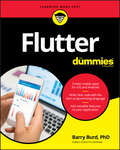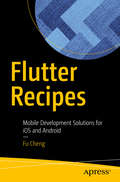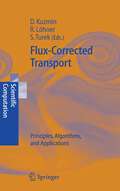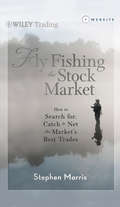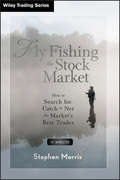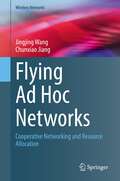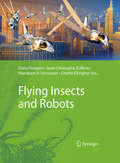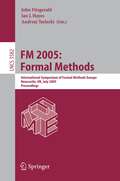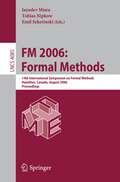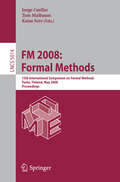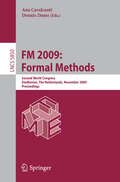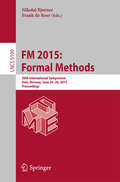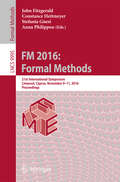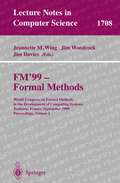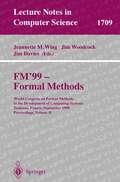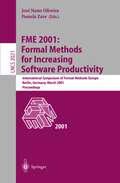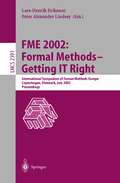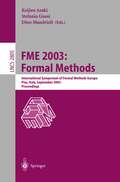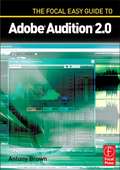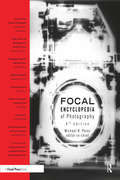- Table View
- List View
Flutter For Dummies
by Barry BurdCreate awesome iOS and Android apps with a single tool! Flutter is an app developer’s dream come true. With Google’s open source toolkit, you can easily build beautiful apps that work across platforms using a single codebase. This flexibility allows you to get your work out to the widest possible audience. Flutter is already being used by thousands of developers worldwide in a market where billions of apps are downloaded every year. Now is the right time to get ahead of the curve with this incredible tool. Flutter for Dummies is your friendly, ground-up route to creating multi-platform apps. From how to construct your initial frameworks to writing code in Dart, you’ll find the essentials you need to ride the Flutter revolutionary wave to success. This book includes guidance on how to create an intuitive and stunning UI, add interactivity, and easily pull in data. You’ll also see how Flutter features like Hot Reload—providing sub-second refreshes as you refine your work—help you make sure your app is a delight to use. · Start simple: follow steps to build a basic app · It’s alive! Keep connected to online data · It moves! Make things fun with animated features · Get the word out: use tips to expand your audience Whether you’re a fledgling developer or an expert wanting to add a slick feather to your programming cap, join the Flutter revolution now and soar above the rest!
Flutter For Dummies
by Barry BurdCreate awesome iOS and Android apps with a single tool! Flutter is an app developer’s dream come true. With Google’s open source toolkit, you can easily build beautiful apps that work across platforms using a single codebase. This flexibility allows you to get your work out to the widest possible audience. Flutter is already being used by thousands of developers worldwide in a market where billions of apps are downloaded every year. Now is the right time to get ahead of the curve with this incredible tool. Flutter for Dummies is your friendly, ground-up route to creating multi-platform apps. From how to construct your initial frameworks to writing code in Dart, you’ll find the essentials you need to ride the Flutter revolutionary wave to success. This book includes guidance on how to create an intuitive and stunning UI, add interactivity, and easily pull in data. You’ll also see how Flutter features like Hot Reload—providing sub-second refreshes as you refine your work—help you make sure your app is a delight to use. · Start simple: follow steps to build a basic app · It’s alive! Keep connected to online data · It moves! Make things fun with animated features · Get the word out: use tips to expand your audience Whether you’re a fledgling developer or an expert wanting to add a slick feather to your programming cap, join the Flutter revolution now and soar above the rest!
Flutter Recipes: Mobile Development Solutions for iOS and Android
by Fu ChengTake advantage of this comprehensive reference to solving common problems when developing with Flutter. Along with an introduction to the basic concepts of Flutter development, the recipes in this book cover all important aspects of this emerging technology, including development, testing, debugging, performance tuning, app publishing, and continuous integration. Although Flutter presents a rich, cross-platform mobile development framework, helpful documentation is not easily found. Here you’ll review solutions to various scenarios and use creative, tested ways to accomplish everything from simple to complex development tasks. Flutter is developed using Dart and contains a unique technology stack that sets it apart from its competitors. This book takes the mystery out of working with the Dart language and integrating Flutter into your already existing workflows and development projects. With Flutter Recipes, you’ll learn how to build and deploy apps freshly started in Flutter, as well as apps already in progress, while side-stepping any potential roadblocks you may face along the way. What You'll LearnDebug with Dart ObservatoryProgram accessibility and localization featuresBuild and release apps for iOS and AndroidIncorporate reactive programmingWho This Book Is ForMobile developers with some experience in other frameworks who would like to work with the growing and popular Flutter.
Flux-Corrected Transport: Principles, Algorithms, and Applications (Scientific Computation)
by Dmitri Kuzmin Rainald Löhner Stefan TurekAddressing students and researchers as well as CFD practitioners, this book describes the state of the art in the development of high-resolution schemes based on the Flux-Corrected Transport (FCT) paradigm. Intended for readers who have a solid background in computational fluid dynamics, the book begins with historical notes by J.P. Boris and D.L. Book. Review articles that follow describe recent advances in the design of FCT algorithms as well as various algorithmic aspects. The topics addressed in the book and its main highlights include: the derivation and analysis of classical FCT schemes, with special emphasis on the underlying physical and mathematical constraints; flux limiting for hyperbolic systems; generalization of FCT to implicit time-stepping and finite element discretizations on unstructured meshes and its role as a subgrid scale model for Monotonically Integrated Large Eddy Simulation (MILES) of turbulent flows. The proposed enhancements of the FCT methodology also comprise the prelimiting and 'failsafe' adjustment of antidiffusive fluxes, the use of characteristic variables, and iterative flux correction. The cause and cure of detrimental clipping/terracing effects are discussed. Many numerical examples are presented for academic test problems and large-scale applications alike.
Fly Fishing the Stock Market: How to Search for, Catch, and Net the Market's Best Trades (Wiley Trading #578)
by Stephen MorrisHow the strategies and tactics of fly fishing can translate to improved trading performance Much like trading, successful fly fishing requires both an understanding of "big picture" conditions and the ability to implement tactical techniques to actually catch the fish. In Fly Fishing the Stock Market, Dr. Stephen Morris compares his method for trading stocks with his favorite past time, fly fishing—providing fresh insights into his successful trading approach. Engaging and accessible, this book skillfully describes how Morris applied this approach to generate an astounding 268% growth in his account in the volatile and confusing, post-financial crisis markets. Morris explains how he uses technical indicators to determine what he calls the "market season" and how he then zeros in on individual stock patterns to make his trades. He also reveals unique tools, such as the Market Timing Monitor and Weather Station, which give him a sense of the market's long-term condition and provides the basis for his trading and risk management strategies. Filled with the authenticity of a real trader figuring out how to uncover profitable trading opportunities A companion Website contains supplementary material that allows you to learn in a hands-on fashion long after closing the book Provides a compelling portrait of how a successful trader thinks about markets, develops a method, and then implements the method in real time The author's spectacular returns are backed by publicly documented records Just like fly fishing, traders must adjust their approach constantly because market conditions constantly change. This book will help you achieve this elusive goal, and capture consistent profits in the process.
Fly Fishing the Stock Market: How to Search for, Catch, and Net the Market's Best Trades (Wiley Trading #578)
by Stephen MorrisHow the strategies and tactics of fly fishing can translate to improved trading performance Much like trading, successful fly fishing requires both an understanding of "big picture" conditions and the ability to implement tactical techniques to actually catch the fish. In Fly Fishing the Stock Market, Dr. Stephen Morris compares his method for trading stocks with his favorite past time, fly fishing—providing fresh insights into his successful trading approach. Engaging and accessible, this book skillfully describes how Morris applied this approach to generate an astounding 268% growth in his account in the volatile and confusing, post-financial crisis markets. Morris explains how he uses technical indicators to determine what he calls the "market season" and how he then zeros in on individual stock patterns to make his trades. He also reveals unique tools, such as the Market Timing Monitor and Weather Station, which give him a sense of the market's long-term condition and provides the basis for his trading and risk management strategies. Filled with the authenticity of a real trader figuring out how to uncover profitable trading opportunities A companion Website contains supplementary material that allows you to learn in a hands-on fashion long after closing the book Provides a compelling portrait of how a successful trader thinks about markets, develops a method, and then implements the method in real time The author's spectacular returns are backed by publicly documented records Just like fly fishing, traders must adjust their approach constantly because market conditions constantly change. This book will help you achieve this elusive goal, and capture consistent profits in the process.
Flying Ad Hoc Networks: Cooperative Networking and Resource Allocation (Wireless Networks)
by Jingjing Wang Chunxiao JiangRelying on unmanned autonomous flight control programs, unmanned aerial vehicles (UAVs) equipped with radio communication devices have been actively developed around the world. Given their low cost, flexible maneuvering and unmanned operation, UAVs have been widely used in both civilian operations and military missions, including environmental monitoring, emergency communications, express distribution, even military surveillance and attacks, for example. Given that a range of standards and protocols used in terrestrial wireless networks are not applicable to UAV networks, and that some practical constraints such as battery power and no-fly zone hinder the maneuverability capability of a single UAV, we need to explore advanced communication and networking theories and methods for the sake of supporting future ultra-reliable and low-latency applications. Typically, the full potential of UAV network’s functionalities can be tapped with the aid of the cooperation of multiple drones relying on their ad hoc networking, in-network communications and coordinated control. Furthermore, some swarm intelligence models and algorithms conceived for dynamic negotiation, path programming, formation flight and task assignment of multiple cooperative drones are also beneficial in terms of extending UAV’s functionalities and coverage, as well as of increasing their efficiency. We call the networking and cooperation of multiple drones as the terminology ‘flying ad hoc network (FANET)’, and there indeed are numerous new challenges to be overcome before the idespread of so-called heterogeneous FANETs. In this book, we examine a range of technical issues in FANETs, from physical-layer channel modeling to MAC-layer resource allocation, while also introducing readers to UAV aided mobile edge computing techniques.
Flying Insects and Robots
by Dario Floreano Jean-Christophe Zufferey Mandyam V. Srinivasan Charlie EllingtonFlying insects are intelligent micromachines capable of exquisite maneuvers in unpredictable environments. Understanding these systems advances our knowledge of flight control, sensor suites, and unsteady aerodynamics, which is of crucial interest to engineers developing intelligent flying robots or micro air vehicles (MAVs). The insights we gain when synthesizing bioinspired systems can in turn benefit the fields of neurophysiology, ethology and zoology by providing real-life tests of the proposed models. This book was written by biologists and engineers leading the research in this crossdisciplinary field. It examines all aspects of the mechanics, technology and intelligence of insects and insectoids. After introductory-level overviews of flight control in insects, dedicated chapters focus on the development of autonomous flying systems using biological principles to sense their surroundings and autonomously navigate. A significant part of the book is dedicated to the mechanics and control of flapping wings both in insects and artificial systems. Finally hybrid locomotion, energy harvesting and manufacturing of small flying robots are covered. A particular feature of the book is the depth on realization topics such as control engineering, electronics, mechanics, optics, robotics and manufacturing. This book will be of interest to academic and industrial researchers engaged with theory and engineering in the domains of aerial robotics, artificial intelligence, and entomology.
FM 2005: International Symposium of Formal Methods Europe, Newcastle, UK, July 18-22, 2005, Proceedings (Lecture Notes in Computer Science #3582)
by John Fitzgerald Ian J. HayesThis volume contains the proceedings of Formal Methods 2005, the 13th InternationalSymposiumonFormalMethodsheldinNewcastleuponTyne,UK, during July 18–22, 2005. Formal Methods Europe (FME, www.fmeurope.org) is an independent association which aims to stimulate the use of, and research on, formal methods for system development. FME conferences began with a VDM Europe symposium in 1987. Since then, the meetings have grown and have been held about once every 18 months. Throughout the years the symposia have been notablysuccessfulinbringingtogetherresearchers,tooldevelopers,vendors,and users, both from academia and from industry. Formal Methods 2005 con?rms this success. We received 130 submissions to the main conference, from all over the world. Each submission was carefully refereed by at least three reviewers. Then, after an intensive, in-depth discussion, the Program Committee selected 31 papers for presentation at the conference. They form the bulk of this volume. We would like to thank all the Program Committee members and the referees for their excellent and e?cient work. Apart from the selected contributions, the Committee invited three keynote lectures from Mathai Joseph, Marie-Claude Gaudel and Chris Johnson. You will ?nd the abstracts/papers for their keynote lectures in this volume as well. AninnovationfortheFM2005programwasapaneldiscussiononthehistory of formal methods, with Jean-Raymond Abrial, Dines Bjørner, Jim Horning and Cli? Jones as panelists. Unfortunately, it was not possible to re?ect this event in the current volume, but you will ?nd the material documenting it elsewhere (see the conference Web page).
FM 2006: 14th International Symposium on Formal Methods, Hamilton, Canada, August 21-27, 2006, Proceedings (Lecture Notes in Computer Science #4085)
by Jayadev Misra Tobias Nipkow Emil SekerinskiThis book presents the refereed proceedings of the 14th International Symposium on Formal Methods, FM 2006, held in Hamilton, Canada, August 2006. The book presents 36 revised full papers together with 2 invited contributions and extended abstracts of 7 invited industrial presentations, organized in topical sections on interactive verification, formal modelling of systems, real time, industrial experience, specification and refinement, programming languages, algebra, formal modelling of systems, and more.
FM 2008: 15th International Symposium on Formal Methods, Turku, Finland, May 26-30, 2008, Proceedings (Lecture Notes in Computer Science #5014)
by Jorge Cuellar Tom MaibaumThis book presents the refereed proceedings of the 15th International Symposium on Formal Methods, FM 2008, held in Turku, Finland in May 2008. The 23 revised full papers presented together with 4 invited contributions and extended abstracts of 5 invited industrial presentations were carefully reviewed and selected from 106 submissions. The papers are organized in topical sections on programming language analysis, verification, real-time and concurrency, grand chellenge problems, fm practice, runtime monitoring and analysis, communication, constraint analysis, and design.
FM 2009: Second World Congress, Eindhoven, The Netherlands, November 2-6, 2009, Proceedings (Lecture Notes in Computer Science #5850)
by Ana Cavalcanti Dennis Damsth FM 2009, the 16 International Symposium on Formal Methods, marked the 10th an- versary of the First World Congress on Formal Methods that was held in 1999 in Toulouse, France. We wished to celebrate this by advertising and organizing FM 2009 as the Second World Congress in the FM series, aiming to once again bring together the formal methods communities from all over the world. The statistics displayed in the table on the next page include the number of countries represented by the Programme Committee members, as well as of the authors of submitted and accepted papers. Novel this year was a special track on tools and industrial applications. Subm- sions of papers on these topics were especially encouraged, but not given any special treatment. (It was just as hard to get a special track paper accepted as any other paper.) What we did promote, however, was a discussion of how originality, contri- tion, and soundness should be judged for these papers. The following questions were used by our Programme Committee.
FM 2011: 17th International Symposium on Formal Methods, Limerick, Ireland, June 20-24, 2011, Proceedings (Lecture Notes in Computer Science #6664)
by Michael Butler Wolfram SchulteThis book constitutes the refereed proceedings of the 17th International Symposium on Formal Methods, FM 2011, held in Limerick, Ireland, in June 2011. The 29 revised full papers presented together with 3 invited talks were carefully reviewed and selected from numerous submissions. The papers are organized in topical sections on cyber-physical systems, runtime analysis, case studies/tools, experience, program compilation and transformation, security, progress algebra, education, concurrency, dynamic structures, and model checking.
FM 2012: 18th International Symposium, Paris, France, August 27-31, 2012. Proceedings (Lecture Notes in Computer Science #7436)
by Dimitra Giannakopoulou Dominique MeryThis book constitutes the refereed proceedings of the 18th International Symposium on Formal Methods, FM 2012, held in Paris, France, in August 2012. The 28 revised full papers presented together with 7 tool papers and 3 invited talks were carefully reviewed and selected from numerous submissions. The papers cover several aspects of formal methods, including verification, synthesis, runtime monitoring, testing and controller synthesis, as well as novel applications of formal methods in interesting domains such as satellites, autonomous vehicles and disease dynamics.
FM 2014: 19th International Symposium, Singapore, May 12-16, 2014. Proceedings (Lecture Notes in Computer Science #8442)
by Cliff Jones Pekka Pihlajasaari Jun SunThis book constitutes the refereed proceedings of the 19th International Symposium on Formal Methods, FM 2014, held in Singapore, May 2014. The 45 papers presented together with 3 invited talks were carefully reviewed and selected from 150 submissions. The focus of the papers is on the following topics: Interdisciplinary Formal Methods, Practical Applications of Formal Methods in Industrial and Research Settings, Experimental Validation of Tools and Methods as well as Construction and Evolution of Formal Methods Tools.
FM 2015: 20th International Symposium, Oslo, Norway, June 24-26, 2015, Proceedings (Lecture Notes in Computer Science #9109)
by Nikolaj Bjørner Frank De BoerThis book constitutes the refereed proceedings of the 20th International Symposium on Formal Methods, FM 2015, held in Oslo, Norway, in June 2015. The 30 full papers and 2 short papers presented were carefully reviewed and selected from 124 submissions. The papers cover a wide spectrum of all the different aspects of the use of and the research on formal methods for software development.
FM 2016: 21st International Symposium, Limassol, Cyprus, November 9-11, 2016, Proceedings (Lecture Notes in Computer Science #9995)
by John Fitzgerald Constance Heitmeyer Stefania Gnesi Anna PhilippouThis book constitutes the refereed proceedings of the 21st International Symposium on Formal Methods, FM 2016, held in Limassol, Cyprus, in November 2016. The 38 full papers and 11 short papers presented together with one abstract of an invited talk and one invited presentation were carefully reviewed and selected from 162 submissions. The broad topics of interest for FM include: interdisciplinary formal methods; formal methods in practice; tools for formal methods; role of formal methods in software and systems engineering; theoretical foundations.
FM'99 - Formal Methods: World Congress on Formal Methods in the Developement of Computing Systems, Toulouse, France, September 20-24, 1999, Proceedings, Volume I (Lecture Notes in Computer Science #1708)
by Jeannette M. Wing Jim Woodcook Jim DaviesFormal methods are coming of age. Mathematical techniques and tools are now regarded as an important part of the development process in a wide range of industrial and governmental organisations. A transfer of technology into the mainstream of systems development is slowly, but surely, taking place. FM’99, the First World Congress on Formal Methods in the Development of Computing Systems, is a result, and a measure, of this new-found maturity. It brings an impressive array of industrial and applications-oriented papers that show how formal methods have been used to tackle real problems. These proceedings are a record of the technical symposium ofFM’99:alo- side the papers describingapplicationsofformalmethods,youwill ndtechnical reports,papers,andabstracts detailing new advances in formaltechniques,from mathematical foundations to practical tools. The World Congress is the successor to the four Formal Methods Europe Symposia, which in turn succeeded the four VDM Europe Symposia. This s- cession re?ects an increasing openness within the international community of researchers and practitioners: papers were submitted covering a wide variety of formal methods and application areas. The programmecommittee re?ects the Congress’s international nature, with a membership of 84 leading researchersfrom 38 di erent countries.The comm- tee was divided into 19 tracks, each with its own chair to oversee the reviewing process. Our collective task was a di cult one: there were 259 high-quality s- missions from 35 di erent countries.
FM'99 - Formal Methods: World Congress on Formal Methods in the Development of Computing Systems, Toulouse, France, September 20-24, 1999 Proceedings, Volume II (Lecture Notes in Computer Science #1709)
by Jeannette M. Wing Jim Woodcook Jim DaviesFormal methods are coming of age. Mathematical techniques and tools are now regarded as an important part of the development process in a wide range of industrial and governmental organisations. A transfer of technology into the mainstream of systems development is slowly, but surely, taking place. FM’99, the First World Congress on Formal Methods in the Development of Computing Systems, is a result, and a measure, of this new-found maturity. It brings an impressive array of industrial and applications-oriented papers that show how formal methods have been used to tackle real problems. These proceedings are a record of the technical symposium ofFM’99:alo- side the papers describingapplicationsofformalmethods,youwill ndtechnical reports,papers,andabstracts detailing new advances in formaltechniques,from mathematical foundations to practical tools. The World Congress is the successor to the four Formal Methods Europe Symposia, which in turn succeeded the four VDM Europe Symposia. This s- cession re?ects an increasing openness within the international community of researchers and practitioners: papers were submitted covering a wide variety of formal methods and application areas. The programmecommittee re?ects the Congress’s international nature, with a membership of 84 leading researchersfrom 38 di erent countries.The comm- tee was divided into 19 tracks, each with its own chair to oversee the reviewing process. Our collective task was a di cult one: there were 259 high-quality s- missions from 35 di erent countries.
FME 2001: International Symposium of Formal Methods Europe, Berlin, Germany, March 12-16, 2001, Proceedings (Lecture Notes in Computer Science #2021)
by Jose N. Oliveira Pamela ZaveFME 2001 is the tenth in a series of meetings organized every eighteen months by Formal Methods Europe (FME), an independent association whose aim is to stimulate the use of, and research on, formal methods for software development. It follows four VDM Europe Symposia, four other Formal Methods Europe S- posia, and the 1999 World Congress on Formal Methods in the Development of Computing Systems. These meetings have been notably successful in bringing - gether a community of users, researchers, and developers of precise mathematical methods for software development. FME 2001 took place in Berlin, Germany and was organized by the C- puter Science Department of the Humboldt-Universit¨at zu Berlin. The theme of the symposium was Formal Methods for Increasing Software Productivity. This theme recognizes that formal methods have the potential to do more for industrial software development than enhance software quality { they can also increase productivity at many di erent points in the software life-cycle. The importance of the theme is borne out by the many contributed papers showing how formal methods can make software development more e cient. There is an emphasis on tools that nd errors automatically, or with relatively little human e ort. There is also an emphasis on the use of formal methods to assist with critical, labor-intensive tasks such as program design and test-case generation.
FME 2002: International Symposium of Formal Methods Europe, Copenhagen, Denmark, July 22-24, 2002 Proceedings (Lecture Notes in Computer Science #2391)
by Lars-Henrik Eriksson Peter A. LindsayThis volume contains the proceedings of the 2002 symposium Formal Methods th Europe (FME 2002). The symposium was the 11 in a series that began with a VDM Europe symposium in 1987. The symposia are traditionally held every 18 months. In 2002 the symposium was held at the University of Copenhagen, as part of the 2002 Federated Logic Conference (FLoC 2002), which brought - gether in one event seven major conferences related to logic in computer science, as well as their a?liated workshops, tutorials, and tools exhibitions. Formal Methods Europe (www.fmeurope.org) is an independent association which aims to stimulate the use of, and research on, formal methods for software development. FME symposia have been notably successful in bringing together a community of users, researchers, and developers of precise mathematical - thods for software development. The theme of FME 2002 was “Formal Methods: Getting IT Right”. The double meaning was intentional. On the one hand, the theme acknowledged the signi?cant contribution formal methods can make to Information Technology, by enabling computer systems to be described precisely and reasoned about with rigour. On the other hand, it recognized that current formal methods are not perfect, and further research and practice are required to improve their foundations, applicability, and e?ectiveness.
FME 2003: International Symposium of Formal Methods Europe. Pisa Italy, September 8-14, 2003, Proceedings (Lecture Notes in Computer Science #2805)
by Keijiro Araki Stefania Gnesi Dino MandrioliThisvolumecontainstheproceedingsofFM2003,the12thInternationalFormal Methods Europe Symposium which was held in Pisa, Italy on September 8–14, 2003. Formal Methods Europe (FME, www. fmeurope. org) is an independent - sociation which aims to stimulate the use of and research on formal methods for system development. FME conferences began with a VDM Europe symposium in 1987. Since then, the meetings have grown and have been held about once - ery 18 months. Throughout the years the symposia have been notably successful in bringing together researchers, tool developers, vendors, and users, both from academia and from industry. Unlike previous symposia in the series, FM 2003 was not given a speci?c theme. Rather, its main goal could be synthesized as “widening the scope. ” Indeed, the organizers aimed at enlarging the audience and impact of the symposium along several directions. Dropping the su?x ‘E’ from the title of the conference re?ects the wish to welcome participation and contribution from every country; also,contributionsfromoutsidethetraditionalFormalMethodscommunitywere solicited. The recent innovation of including an Industrial Day as an important part of the symposium shows the strong commitment to involve industrial p- ple more and more within the Formal Methods community. Even the traditional and rather fuzzy borderline between “software engineering formal methods” and methods and formalisms exploited in di?erent ?elds of engineering was so- what challenged.
The Focal Easy Guide To Adobe Audition 2. 0
by Antony BrownSoftware packages are complex. Shouldn't software books make it easier? Simplify your life with the Focal Easy Guide to Adobe (r) Audition (r) 2. 0 This short, full-color book lives up to its name by paring down the software to its essentials. It covers only the key features and essential workflow to get you up and running in no time. When time is of the essence, less is more Antony Brown shares his professional insight to ensure you get the most out of all the tools Adobe's Audition (r) 2. 0 offers. All the essential areas are covered: set up, editing, audio restoration, looping content, working with video, mastering, making a CD, and much more. Featured are many workflow tips that show you how to tap into the full power of Adobe (r) Audition (r) 2. 0 when creating your digital audio files. This is an ideal first read for any editor new to Adobe (r) Audition (r
The Focal Encyclopedia of Photography: From The First Photo On Paper To The Digital Revolution
by Michael R. Peres*Searchable CD ROM containing the entire book (including images) *Over 450 color images, plus never before published images provided by the George Eastman House collection, as well as images from Ansel Adams, Howard Schatz, and Jerry Uelsmann to name just a few The role and value of the picture cannot be matched for accuracy or impact. This comprehensive treatise, featuring the history and historical processes of photography, contemporary applications, and the new and evolving digital technologies, will provide the most accurate technical synopsis of the current, as well as early worlds of photography ever compiled. This Encyclopedia, produced by a team of world renown practicing experts, shares in highly detailed descriptions, the core concepts and facts relative to anything photographic. This Fourth edition of the Focal Encyclopedia serves as the definitive reference for students and practitioners of photography worldwide, expanding on the award winning 3rd edition. In addition to Michael Peres (Editor in Chief), the editors are: Franziska Frey (Digital Photography), J. Tomas Lopez (Contemporary Issues), David Malin (Photography in Science), Mark Osterman (Process Historian), Grant Romer (History and the Evolution of Photography), Nancy M. Stuart (Major Themes and Photographers of the 20th Century), and Scott Williams (Photographic Materials and Process Essentials)
The Focal Encyclopedia of Photography
by Michael R. Peres*Searchable CD ROM containing the entire book (including images) *Over 450 color images, plus never before published images provided by the George Eastman House collection, as well as images from Ansel Adams, Howard Schatz, and Jerry Uelsmann to name just a few The role and value of the picture cannot be matched for accuracy or impact. This comprehensive treatise, featuring the history and historical processes of photography, contemporary applications, and the new and evolving digital technologies, will provide the most accurate technical synopsis of the current, as well as early worlds of photography ever compiled. This Encyclopedia, produced by a team of world renown practicing experts, shares in highly detailed descriptions, the core concepts and facts relative to anything photographic. This Fourth edition of the Focal Encyclopedia serves as the definitive reference for students and practitioners of photography worldwide, expanding on the award winning 3rd edition. In addition to Michael Peres (Editor in Chief), the editors are: Franziska Frey (Digital Photography), J. Tomas Lopez (Contemporary Issues), David Malin (Photography in Science), Mark Osterman (Process Historian), Grant Romer (History and the Evolution of Photography), Nancy M. Stuart (Major Themes and Photographers of the 20th Century), and Scott Williams (Photographic Materials and Process Essentials)
